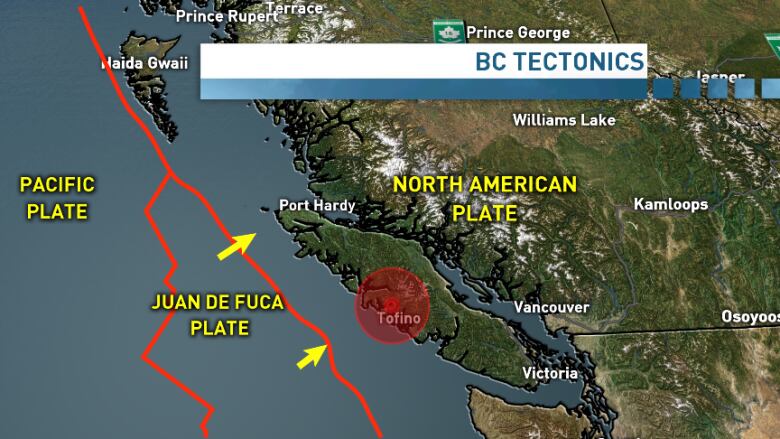Magnitude 3.5 earthquake off Vancouver Saturday felt by residents

It turns out the earth did move on Valentine's Day, but it wasn't allromance.
Just after 8 p.m. PT. asmall 3.5 magnitude earthquake struck 12 km west of Vancouver and was felt by some residents in the Lower Mainland, along the Sunshine Coast and as far away as Squamish.
The U.S. Geological Survey reported the quake at a depth of 10 km.
There were no reports of injuries or damage, but the City of Vancouver took advantage of the situation to tweet out a reminder to be prepared.
InSquamish, BonnieNicoltweeted that it felt like a punch.To staff at the London Drugs inGibsons,it felt like a truck driving by.
Earthquakes Canada says the Pacific Coast is the most earthquake-prone region in Canada. Each year seismologists record and locate more than 1,000 earthquakes, most of them too small to be felt.
During the last 70 years, more than 100 earthquakes of magnitude 5.0 or greaterhave been recordedsomelarge enough to cause damage had they been closer to land.
Scientists saythe earth's crust is made up of plates that move about as fast as a fingernail grows. These plates can slide past one another, run into each other, or diverge and move apart.
Natural Resources Canada says B.C.'s Pacific coast is one of the few regions of the world where all three types of plate movement are taking place.

That earthquake is predicted to take place on an entirely different plate deep within the subduction zone further offshore where the Juan de Fuca plate is sliding under the North America plate.












_(720p).jpg)


 OFFICIAL HD MUSIC VIDEO.jpg)
.jpg)



























































































